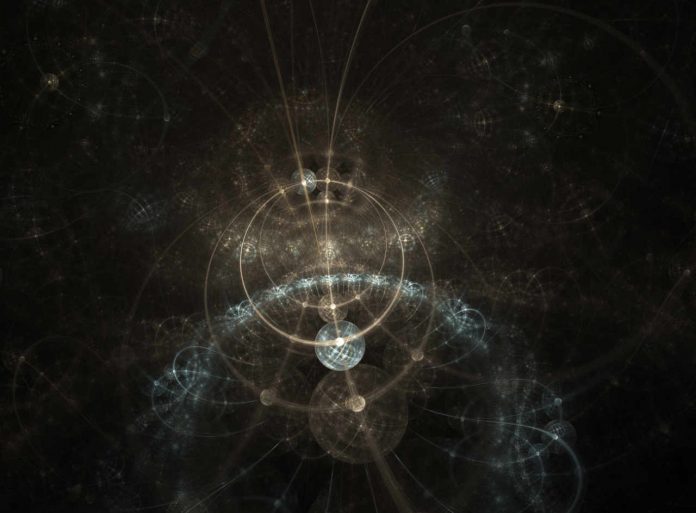Scientists and researchers have discovered a ‘landmark’ quantum physics breakthrough, the angel particle, or as it is formally known as the Majorana fermion particle.
Note: The particle itself is not angelic, rather according to the Independent scientists and researchers dubbed it the “Angel Particle” after Dan Brown’s thriller Angels and Demons which involves a bomb made from a combination of matter and anti-matter. Interestingly enough, the bomb in Angels and Demons was created and stolen by an organization called The Illuminati.
In the thriller, the Illuminati is uncovered not as musicians, but rather as researchers, philosophers, and scientists. The intent to name a particle after such literally shows the intent behind the discovery and exactly what it will be used for.
However, the latest particle to be discovered is officially called the Majorana fermion and was originally theorized eighty years ago by an Italian theoretical physicist, Ettore Majorana, who predicted an existence of a class of particles called fermions which are particles that have their own anti-particles.
The debate over what was actually discovered still rages on because technically the discovery is actually not a particle at all, but rather a ‘mode’ of particles, or a quasiparticle that appears in certain superconductors.
Although Majorana fermions remain elusive as elementary particles, their solid-state analogs have been observed in hybrid semiconductor-superconductor nanowires. In a nanowire setting, the Majorana states are localized at the ends of the wire. He et al. built a two-dimensional heterostructure in which a one-dimensional Majorana mode is predicted to run along the sample edge (see the Perspective by Pribiag).
The discovery, according to ScienceMag, is an extreme breakthrough in quantum computing because the finding may open up an avenue to control Majorana fermions which could use the particle/mode to implement robust topological quantum computing.
Professor Shoucheng Zhang, a Standford University physicist, proposed how they could discover the fermion and stated that: “Our team predicted exactly where to find the Majorana fermion and what to look for as its ‘smoking gun’ experimental signature. “This discovery concludes one of the most intensive searches in fundamental physics, which spanned exactly 80 years.”
The quantum computing revolution has yet to come about because they must be isolated from environmental noise. However, with the discovery of the Majorana fermion, the qubit (quantum bit) could be stored on separate Majorana fermions, and if the interference affected the information in one, the other would almost certainly keep it safe.
“It does seem to be a really clean observation of something new,” said Professor Frank Wilczek, a theoretical physicist and Nobel laureate at the Massachusetts Institute of Technology.
“It’s not fundamentally surprising, because physicists have thought for a long time that Majorana fermions could arise out of the types of materials used in this experiment.
Works Cited
Ian Johnston. “'Angel particle’ which is both matter and anti-matter discovered in ‘landmark’ quantum physics breakthrough.” The Independent. . (2017): . .
Staff Reporter. “First firm evidence of the Majorana fermion particle discovered during quantum experiment.” International Business Times. . (2017): . .
Qing Lin He1, Lei Pan1, Alexander L. Stern, Edward C. Burks, Xiaoyu Che, Gen Yin, Jing Wang, Biao Lian, Quan Zhou, Eun Sang Choi, Koichi Murata, Xufeng Kou1, Zhijie Chen, Tianxiao Nie, Qiming Shao, Yabin Fan, Shou-Cheng Zhang, Kai Liu, Jing Xia, Kang L. Wang. “Chiral Majorana fermion modes in a quantum anomalous Hall insulator–superconductor structure.” Science mag. . (2017): . . http://science.sciencemag.org/content/357/6348/294


![[VIDEO] Drag Queen Drag Shows Are Now Infesting Churches](https://christianjournal.net/wp-content/uploads/2019/11/Screenshot-2019-11-22-at-9.02.01-PM-218x150.png)
![[VIDEO] Starbucks Worker Dumps Milkshake On Open Air Preachers Head](https://christianjournal.net/wp-content/uploads/2019/11/Screenshot-2019-11-22-at-7.23.43-PM-218x150.png)
![[VIDEO] Man Arrested For Threatening To Kill Female Abolitionist With Crowbar](https://christianjournal.net/wp-content/uploads/2019/11/MLock-1-218x150.jpg)
![[VIDEO] Drag Queen Drag Shows Are Now Infesting Churches](https://christianjournal.net/wp-content/uploads/2019/11/Screenshot-2019-11-22-at-9.02.01-PM-100x70.png)
![[VIDEO] Starbucks Worker Dumps Milkshake On Open Air Preachers Head](https://christianjournal.net/wp-content/uploads/2019/11/Screenshot-2019-11-22-at-7.23.43-PM-100x70.png)
![[VIDEO] Man Arrested For Threatening To Kill Female Abolitionist With Crowbar](https://christianjournal.net/wp-content/uploads/2019/11/MLock-1-100x70.jpg)


